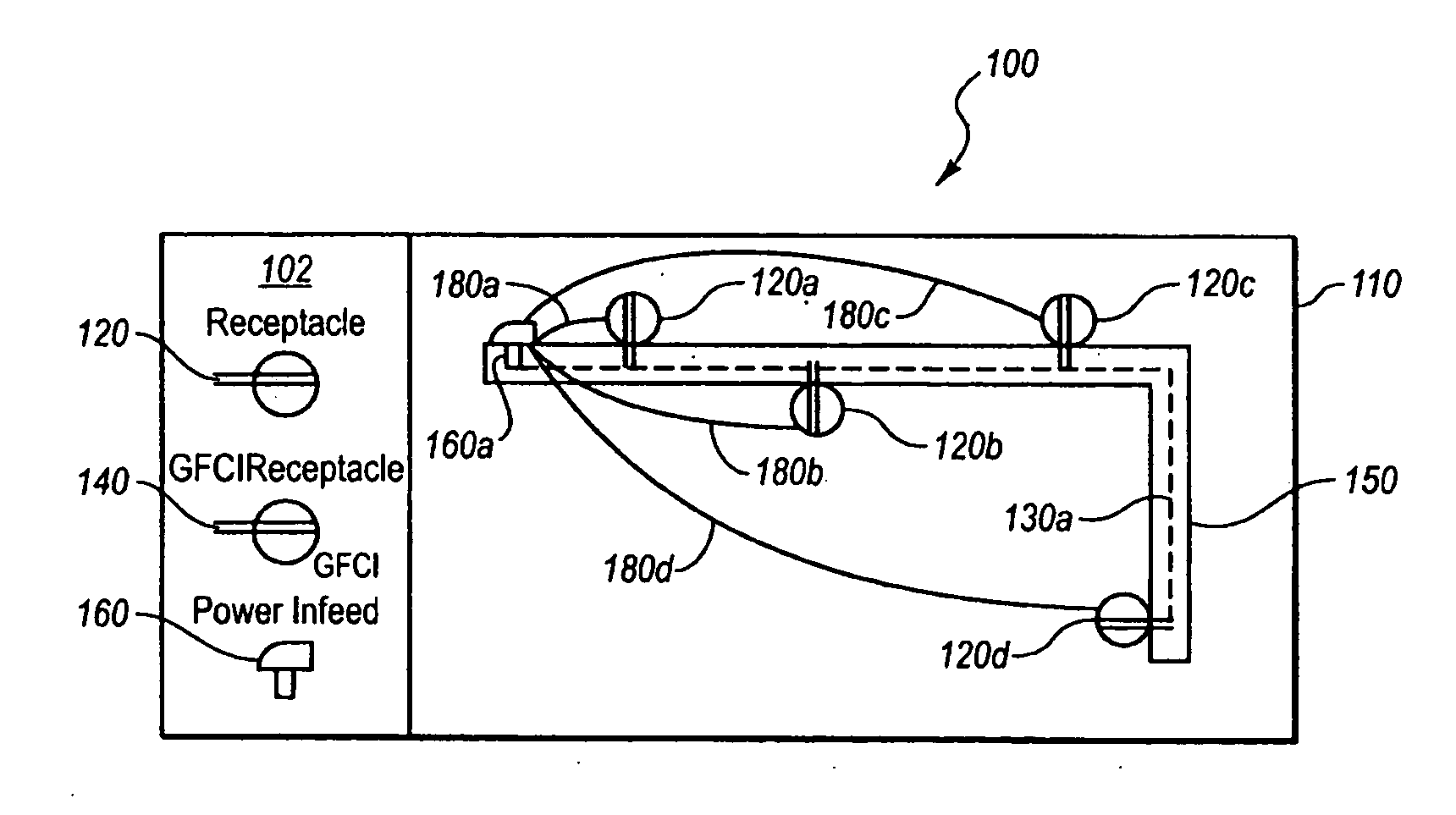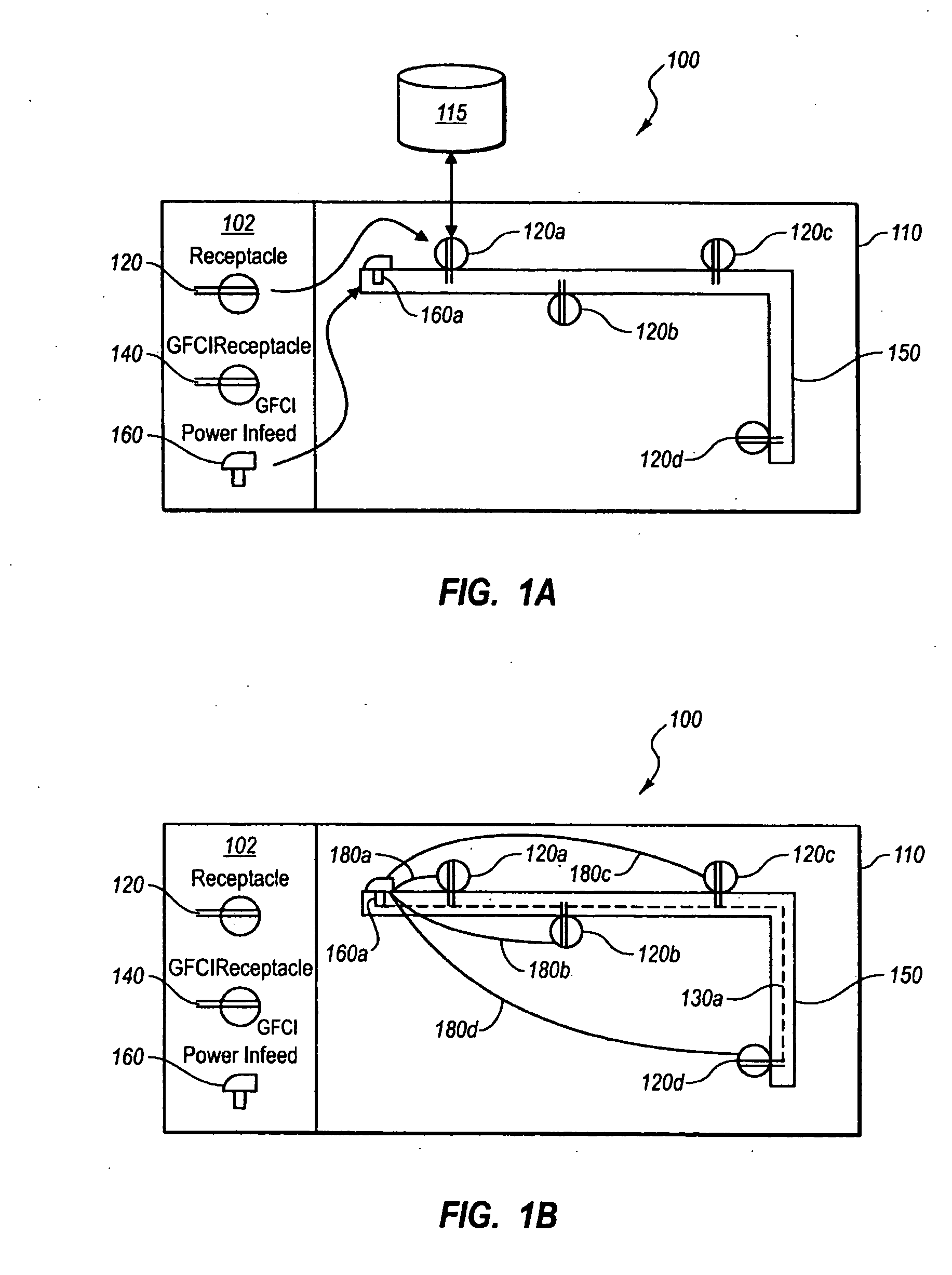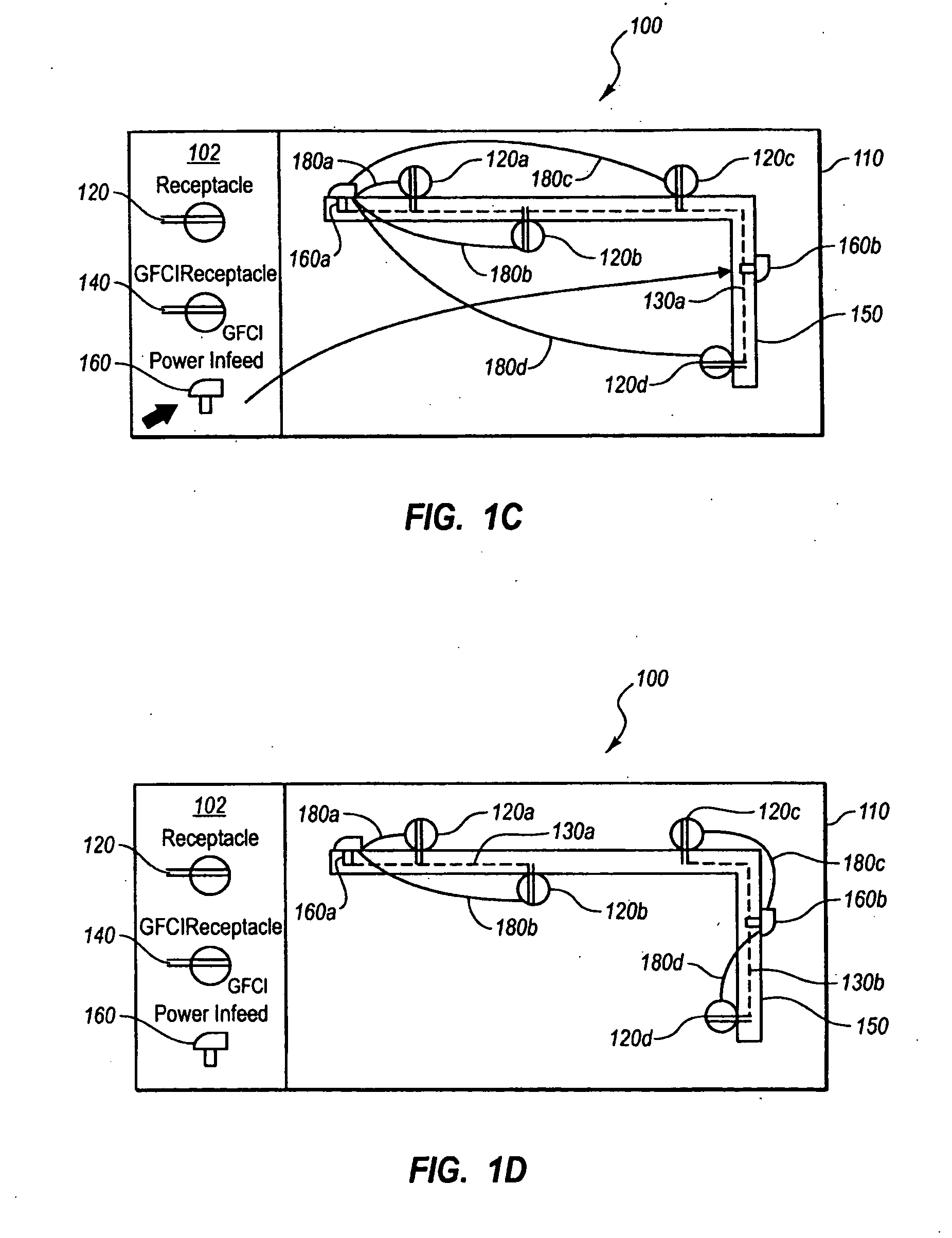Creation and modification of valid functional design layouts
a functional design and layout technology, applied in the field of system, method and computer program product for modeling and design, can solve problems such as physical impossible or impractical layout, hot circuit, fire hazards,
- Summary
- Abstract
- Description
- Claims
- Application Information
AI Technical Summary
Benefits of technology
Problems solved by technology
Method used
Image
Examples
Embodiment Construction
[0034]The present invention extends to systems, methods, and computer program products configured to capture product information, such as component attributes and parameters, to allow a non-expert user to design a valid functional system layout within a design space. In particular, implementations of the present invention automatically associate product parameters and attributes to both functional and non-functional design components, including all applicable connectors, rules, features, characteristics, and behaviors. Based upon the components and their associated attributes and parameters, implementations of the present invention can automatically apply rules and behaviors to help create a functional system layout in a design space that is physically and functionally valid. Furthermore, implementations of the present invention can optimize the parameters of the functional system layout.
[0035]For example, based on the placement of source components (power sources, gas and water val...
PUM
 Login to View More
Login to View More Abstract
Description
Claims
Application Information
 Login to View More
Login to View More - R&D
- Intellectual Property
- Life Sciences
- Materials
- Tech Scout
- Unparalleled Data Quality
- Higher Quality Content
- 60% Fewer Hallucinations
Browse by: Latest US Patents, China's latest patents, Technical Efficacy Thesaurus, Application Domain, Technology Topic, Popular Technical Reports.
© 2025 PatSnap. All rights reserved.Legal|Privacy policy|Modern Slavery Act Transparency Statement|Sitemap|About US| Contact US: help@patsnap.com



